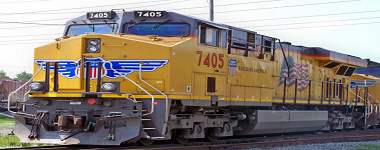Week 51 of 2017 shows same week total rail traffic (from same week one year ago) SIGNIFICANTLY expanded according to the Association of American Railroads (AAR) traffic data. The economically intuitive sectors remain in expansion and the rolling average growth rate improved.

Analyst Opinion of the Rail Data
We review this data set to understand the economy. If coal and grain are removed from the analysis, this week it improved 17.6 % (meaning that the predictive economic elements improved year-over-year). The year-over-year growth rate of the predictive elements is at a three year high.
Intermodal transport again grew strongly year-over-year this week – which is the real economically positive element or rail transport.
The following graph compares the four week moving averages for the rail economically intuitive sectors (red line) vs. total movements (blue line): Rail’s intuitive sectors have been bouncing around the zero growth line for most of 2017.
This analysis is looking for clues in the rail data to show the direction of economic activity – and is not necessarily looking for clues of profitability of the railroads. The weekly data is fairly noisy, and the best way to view it is to look at the rolling averages (carloads [including coal and grain] and intermodal combined).
A summary of the data from the AAR:
For this week, total U.S. weekly rail traffic was 551,566 carloads and intermodal units, up 11 percent compared with the same week last year.?
Total carloads for the week ending December 23 were 270,356 carloads, up 10.8 percent compared with the same week in 2016, while U.S. weekly intermodal volume was 281,210 containers and trailers, up 11.3 percent compared to 2016.?
Nine of the 10 carload commodity groups posted an increase compared with the same week in 2016. They included nonmetallic minerals, up 9,934 carloads, to 34,424; metallic ores and metals, up 5,576 carloads, to 25,589; and coal, up 5,374 carloads, to 89,997. One commodity group posted a decrease compared with the same week in 2016: grain, down 183 carloads, to 22,425.?
For the first 51 weeks of 2017, U.S. railroads reported a cumulative volume of 13,283,446 carloads, up 3.1 percent from the same point last year; and 13,809,482 intermodal units, up 4.0 percent from last year. Total combined U.S. traffic for the first 51 weeks of 2017 was 27,092,928 carloads and intermodal units, an increase of 3.6 percent compared to last year.?
North American rail volume for the week ending December 23, 2017, on 13 reporting U.S., Canadian and Mexican railroads totaled 371,882 carloads, up 10.8 percent compared with the same week last year, and 360,676 intermodal units, up 13.2 percent compared with last year. Total combined weekly rail traffic in North America was 732,558 carloads and intermodal units, up 12 percent. North American rail volume for the first 51 weeks of 2017 was 35,960,443 carloads and intermodal units, up 4.9 percent compared with 2016.?










Leave A Comment